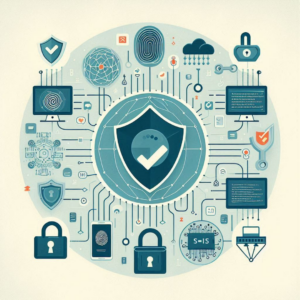Protocols and Secure Systems: Ensuring Safety and Reliability
1. Introduction to Protocols in Secure Systems: The Role of Internet Protocol in Secure Communication
Internet Protocols are essential in secure systems. They serve as the foundational rules for data communication. These rules govern interaction between devices. Protocols ensure that data is transmitted reliably and securely. This is particularly critical in environments where sensitive information is exchanged. The evolution of protocols has been driven by the need for enhanced security measures, efficiency, and interoperability among diverse systems.
2. Types of Protocols
2.1 Transport Layer Protocols
Transport layer protocols, such as TCP and UDP, are responsible for reliable data transmission. TCP ensures that data packets are delivered in order and without errors. On the other hand, UDP offers a faster, connectionless service suitable for speed-critical applications.
2.2 Application Layer Protocols
Protocols like HTTP, FTP, and SMTP operate at the application layer. They facilitate specific types of communication. For instance, HTTP is used for web traffic, while SMTP handles email transmission.
2.3 Network Layer Protocols
IP is the most notable example of a network layer protocol. It is responsible for addressing and routing packets of data. IP operates independently of the underlying physical network, which makes it versatile.
2.4 Security Protocols
Security protocols, such as SSL/TLS and IPsec, secure communications over networks. They provide encryption, authentication, and integrity checks. This protects data from unauthorized access and tampering.
2.5 Real-Time Communication Protocols
In industrial settings, protocols like EtherCAT and PROFINET support real-time communication. They ensure data is transmitted with minimal latency. This is crucial in applications where timing is critical, such as automation.
3. Importance of Secure Protocols in Internet Protocol Communication
Secure protocols protect data integrity, confidentiality, and availability. They help mitigate risks associated with data breaches, unauthorized access, and cyberattacks. The implementation of secure protocols involves several key components.
3.1 Encryption
Encryption transforms readable data into an unreadable format. This ensures that even if data is intercepted, it cannot be understood without the appropriate key. Protocols like TLS use encryption to secure data transmitted over the internet.
3.2 Authentication
Authentication verifies the identity of users or devices. Protocols often incorporate mechanisms such as digital certificates and two-factor authentication to enhance security.
3.3 Integrity Checks
Protocols implement checks to ensure data has not been altered during transmission. Techniques such as hashing are commonly used to verify data integrity.
4. Challenges in Internet Protocol and Protocol Implementation
Despite advancements in protocol design, several challenges remain.
4.1 Interoperability
Different systems may use various protocols, leading to compatibility issues. Ensuring that diverse systems can communicate effectively is a significant challenge.
4.2 Scalability
As networks grow, maintaining performance and security becomes complex. Protocols must be designed to scale efficiently without compromising security.
4.3 Latency
In real-time applications, the speed of data transmission is critical. Protocols must balance security measures with the need for low latency.
4.4 Evolving Threats
Cybersecurity threats are constantly evolving. This necessitates regular updates and improvements to security protocols. Organizations must adapt their protocols to counter new vulnerabilities.
5. Protocols in Industrial IoT
The rise of the Industrial Internet of Things (IIoT) has introduced new protocols for secure communication among connected devices. These protocols must address unique challenges.
5.1 Data Volume
IIoT systems generate vast amounts of data that must be transmitted securely. Protocols like MQTT are designed for lightweight communication, making them suitable for IoT applications.
5.2 Device Diversity
IIoT environments consist of a wide range of devices. Protocols must be flexible enough to accommodate this diversity while maintaining security.
5.3 Real-Time Requirements
Many industrial applications require real-time data transmission. Protocols must ensure timely communication while implementing robust security measures.
6. Blockchain and Secure Protocols
Blockchain technology enhances security in protocol design. By providing a decentralized and tamper-resistant ledger, blockchain improves data integrity and transparency.
6.1 Decentralization
Blockchain eliminates the need for a central authority. This reduces the risk of single points of failure.
6.2 Immutability
Once data is recorded on a blockchain, it cannot be altered. This ensures the integrity of transmitted information.
6.3 Smart Contracts
Smart contracts are self-executing contracts with terms coded into them. They can automate processes and enhance security in transactions.
7. Conclusion
The landscape of protocols and secure systems is continually evolving, driven by technological advancements and the increasing complexity of communication networks. Networking protocols and internet protocols play a crucial role in ensuring seamless and secure data transmission across interconnected systems. As organizations seek to enhance security, implementing robust protocols becomes paramount. By addressing interoperability, scalability, and emerging threats, organizations can create more resilient and secure systems. Additionally, the integration of emerging technologies, such as blockchain, further strengthens the capabilities of secure networking protocols and internet protocols.
Cloud Astra Technologies. We specialize in software services that can help your organization enhance its security and efficiency.
Do you like to read more educational content? Read our blogs at Cloudastra Technologies or contact us for business enquiry at Cloudastra Contact Us.
